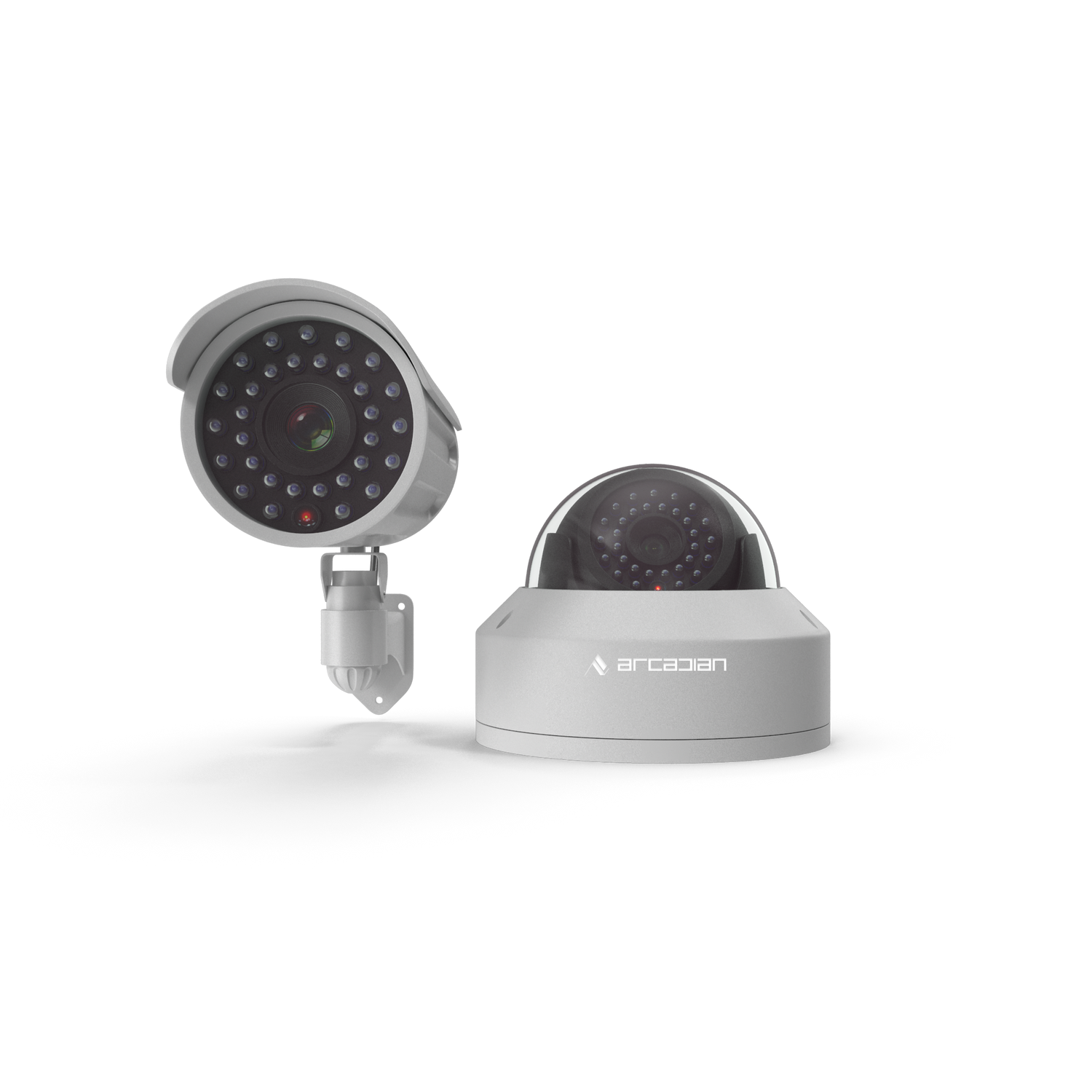What Are the Advantages of Cloud-Based Security Systems?
Ready to take your security to the next level?👉 Introduction: The Shift to Cloud-Powered Security Gone are the days when businesses relied solely on traditional DVRs and NVRs to manage their security systems. The advent of cloud-based security systems has revolutionized how businesses monitor and protect their assets. With features...

Ready to take your security to the next level?
👉
Introduction: The Shift to Cloud-Powered Security
Gone are the days when businesses relied solely on traditional DVRs and NVRs to manage their security systems. The advent of cloud-based security systems has revolutionized how businesses monitor and protect their assets. With features like remote access, scalability, and cost efficiency, cloud-based solutions are rapidly becoming the preferred choice for modern businesses.
In this blog, we’ll explore the key advantages of cloud-based security systems, how they compare to traditional setups, and why they’re an ideal solution for businesses of all sizes.
1. Remote Access: Security Anytime, Anywhere
One of the biggest advantages of cloud-based security systems is the ability to monitor and manage security from anywhere in the world.
Key Benefits:
- Live Monitoring: View real-time video feeds via mobile devices, tablets, or computers.
- Incident Alerts: Receive instant notifications for suspicious activity.
- Multi-Location Management: Monitor multiple sites from a single dashboard.
Example:
A retail chain owner manages security across 10 stores remotely, accessing live feeds and reviewing footage through a cloud-based app.
2. Cost Efficiency: Save on Upfront and Operational Costs
How Cloud Systems Save Money:
- No On-Site Servers: Eliminate the need for expensive hardware and maintenance.
- Subscription Models: Spread costs over time with affordable monthly plans.
- Lower IT Costs: Cloud providers handle system updates and maintenance.
Stat: Businesses switching to cloud-based systems reduce upfront costs by 40% compared to traditional setups (Source: Gartner).
3. Scalability: Adapt as Your Business Grows
Cloud-based systems are designed to grow with your business.
Scalability Features:
- Add or remove cameras and locations without upgrading infrastructure.
- Easily integrate new features like AI analytics or IoT devices.
- Scale storage based on your needs.
Use Case:
A small business starts with a basic system and expands to include additional cameras and features as it grows into multiple locations.
4. Enhanced Data Security
Cloud-based platforms prioritize data protection, ensuring your footage is secure and accessible only to authorized users.
Security Features:
- End-to-End Encryption: Protects data during transmission and storage.
- Redundant Backups: Prevents data loss from hardware failures or theft.
- Access Controls: Multi-factor authentication ensures only authorized personnel can view footage.
Stat: Cloud-based security reduces the risk of data breaches by 50% compared to local storage systems (Source: IDC).
5. Seamless Integration with Other Technologies
Cloud systems can integrate with a range of technologies, creating a unified security ecosystem.
Key Integrations:
- Access Control Systems: Pair footage with access logs for real-time verification.
- AI Analytics: Automate threat detection and gain insights into behavior patterns.
- IoT Devices: Sync cameras with smart locks, alarms, and sensors.
Example:
A warehouse integrates its cloud-based cameras with motion sensors and alarms, creating an automated response system for intrusions.
6. Improved User Experience
Cloud systems offer intuitive interfaces and features that make managing security easier.
User-Friendly Features:
- Customizable dashboards for real-time monitoring.
- Searchable archives for quickly locating footage.
- Automatic software updates to stay ahead of security threats.
7. Better Incident Response
With real-time alerts and remote access, businesses can respond to incidents faster.
How Cloud Systems Enhance Response:
- Receive alerts directly to your device when suspicious activity occurs.
- Share footage instantly with law enforcement or insurance providers.
- Use AI analytics to prioritize alerts, reducing response time.
Stat: Businesses using cloud-based security reduce incident response times by 30% on average (Source: McKinsey).
8. Eco-Friendly and Energy-Efficient
Cloud-based systems consume less energy than traditional setups, making them an environmentally friendly choice.
Why Cloud is Greener:
- Reduced reliance on physical hardware.
- Lower energy consumption by centralized servers compared to multiple on-site systems.
Comparison Table: Traditional vs. Cloud-Based Security Systems
| Feature | Traditional Systems | Cloud-Based Systems |
|---|---|---|
| Accessibility | On-site only | Remote access via internet |
| Scalability | Hardware-dependent | Easily scalable |
| Data Security | Vulnerable to hardware theft | Encrypted and backed up |
| Maintenance | User responsibility | Managed by provider |
| Upfront Costs | High | Lower, with subscription models |
Industries That Benefit Most from Cloud-Based Security
1. Retail
- Challenges: Theft, employee monitoring, and inventory management.
- Solutions: Centralized monitoring of multiple stores with AI-powered analytics.
2. Healthcare
- Challenges: HIPAA compliance and securing patient areas.
- Solutions: Encrypted cloud storage and restricted access controls.
3. Franchises and Multi-Location Businesses
- Challenges: Maintaining consistent security across locations.
- Solutions: Remote management and scalability to match business growth.
Future Trends in Cloud-Based Security
- Edge Computing: Cameras process data locally, reducing latency for real-time alerts.
- AI-Powered Insights: Advanced analytics for smarter threat detection and prevention.
- Biometric Integration: Use of facial recognition for access control and verification.
Conclusion: A Smarter Way to Secure Your Business
Cloud-based security systems offer unparalleled flexibility, scalability, and cost efficiency, making them a game-changer for businesses of all sizes. Whether you’re a small business owner or managing a multi-location franchise, transitioning to the cloud ensures that your security evolves with your needs.

Security is like insurance—until you need it, you don’t think about it.
But when something goes wrong? Break-ins, theft, liability claims—suddenly, it’s all you think about.
ArcadianAI upgrades your security to the AI era—no new hardware, no sky-high costs, just smart protection that works.
→ Stop security incidents before they happen
→ Cut security costs without cutting corners
→ Run your business without the worry
Because the best security isn’t reactive—it’s proactive.






